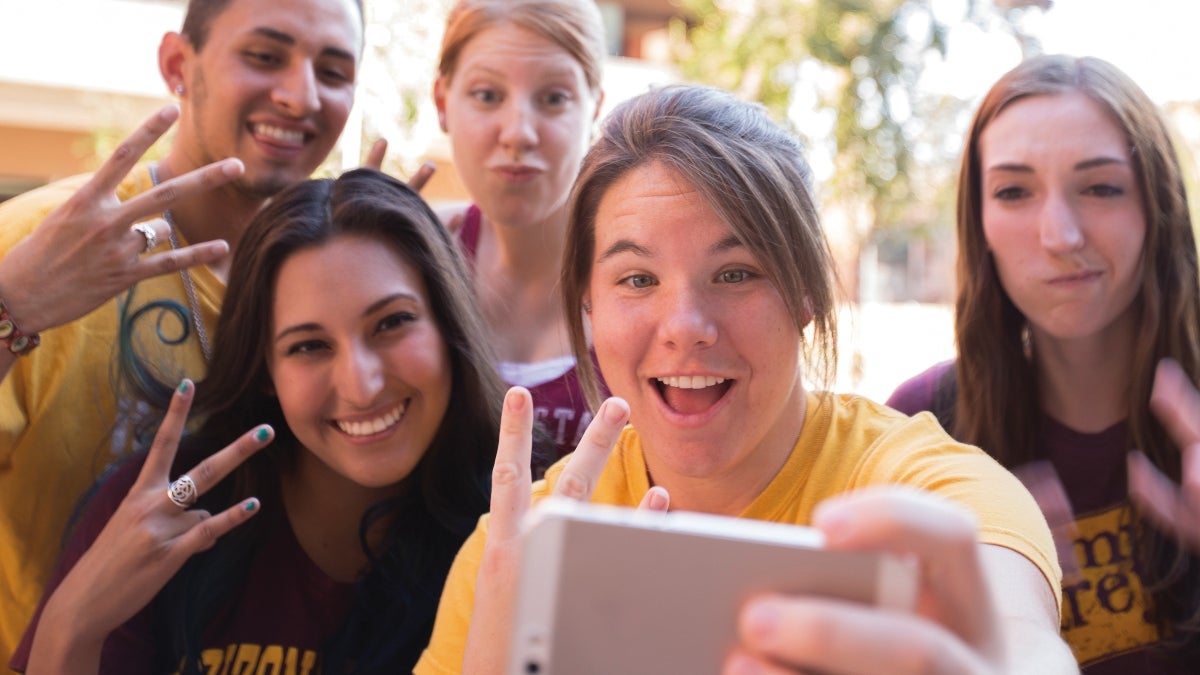As students let slip their grasp on lazy summer days and head back to the classroom, there’s one thing they’re not likely to hand over: their cellphones.
Unsurprisingly, professors don’t like lecturing to the backs of Androids and iPhones with their endless stream of beeps, burbles and boops from social-media updates, texts and instant messages.
A pair of recent studies co-authored by Arizona State University professors Robert Shuter and Pauline Hope Cheong, both from the Hugh Downs SchoolThe Hugh Downs School of Human Communication is an academic unit of the College of Liberal Arts and Sciences. of Human Communication, showed that faculty tend to view electronics as frustrating distractions in the classroom, while students see them as learning aids.
“The major complication is that university students just don’t share their instructors’ views that their mobile devices cause significant classroom disruptions,” Shuter said in a recent op-ed. “So who’s right — students or their instructors? They’re both correct!”
Electronics can enrich learning, Shuter said, if instructors integrate them into teaching and heavily monitor their use in class.
“Positive uses of strategic redirection have a greater chance of successfully managing these devices than more heavy-handed techniques because they’re in sync with the digital attitudes of today’s students,” he wrote. “To end the classroom war on smartphones and laptops, many instructors and universities need to change their negative digital mind-sets and embrace mobile devices as powerful instructional tools, with the potential to revolutionize teaching and learning.”
Shuter has his own students use their devices in class. He has them log on to articles, which they then discuss in class.
“You give them time to look at a selected portion of an article, read it and react to it,” he said in a phone interview Friday. “It’s a wonderful way of utilizing this material in class.”
Professors have to want to try integrating devices in class as much as students don’t want to let go of them.
“They have to first ask the question, are these things of significant value?” Shuter said. “Potentially, yes. There is a reluctance to follow through on making the leap and integrating them into the classroom. They’re both universally distracting to the university professor. Once they make the leap to that mind-set, they have to begin integrating them into the classroom. How do you do that?”
The research made clear that university instructors aren’t sure how to manage mobile devices in their classrooms. There isn’t a consensus. And some students will resent and resist efforts to manage their phones and laptops no matter what instructors do, because technology is so embedded in their lives.
A study of 65 full-time faculty members revealed almost universal frustration with mobiles in classes. They all had different ways of dealing with smartphones. One was making “no cell” rules clear at the beginning of the class.
Sanctioning cell use by reprimands or humiliation was another. “About 15 percent of instructors said they engaged in ‘naming and shaming’ or personal name-calling to ... humiliate the perpetrators.”
One professor told researchers, “Occasionally, I walk around to the back of the room and look at their screens and I make claims like they’re watching pornography, shame on them, so I tease them.”
“Strategic redirection” was another tactic. Besides verbal instruction, instructors used facial gestures by giving students a look or nod to shift their attention. Eight professors mentioned how they would walk around their classroom to keep a check on potentially distracting activities and “lecture close to” offending students. One communication instructor recounted this incident:
“I generally walk around when I lecture rather than just stand at the front. And so that enables me to see what they are doing so, I snuck up behind the one girl who was playing Solitaire, and I just pointed to her screen and said, ‘I think you should move that one there.’ She was mortified. So she didn’t do that anymore.”
A fourth tactic was deflection. These professors don’t say a thing and let offenders drown. Their attitude was “It’s your tuition, and you’re adults.”
Cheong co-authored and published the two new studies on electronic media in the classroom. The studies appeared in the Journal of International and Intercultural Communication and the journal Communication Education.
For Shuter, however, professors can bridge the gap.
“The possibilities are endless if the instructor in America first asks himself the question, ‘Can these things really assist teaching and learning in the classroom?’ ” Shuter said. “Once the answer is ‘I’m going to take a shot,’ the possibilities, I believe, are endless.”
More Science and technology

ASU researcher part of team discovering ways to fight drug-resistant bacteria
A new study published in the Science Advances journal featuring Arizona State University researchers has found vulnerabilities in certain strains of bacteria that are antibiotic resistant, just…

ASU student researchers get early, hands-on experience in engineering research
Using computer science to aid endangered species reintroduction, enhance software engineering education and improve semiconductor material performance are just some of the ways Arizona State…

ASU professor honored with prestigious award for being a cybersecurity trailblazer
At first, he thought it was a drill.On Sept. 11, 2001, Gail-Joon Ahn sat in a conference room in Fort Meade, Maryland. The cybersecurity researcher was part of a group that had been invited…
